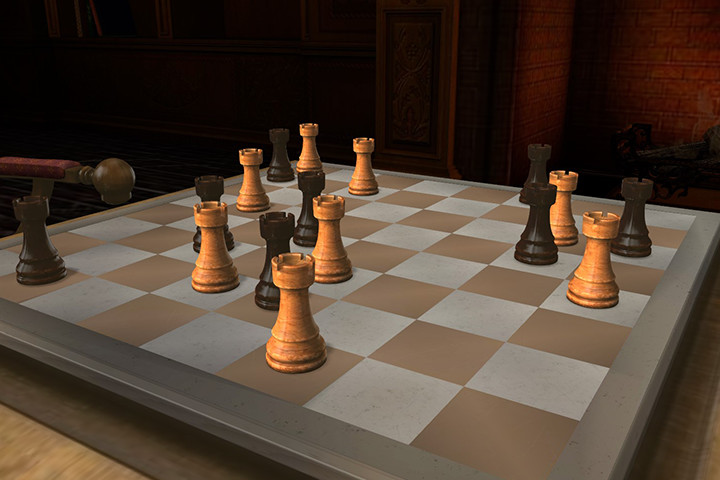


As you can see, eight black rooks and eight white rooks are set up on the chess board. They have this position since a couple of years. The rooks cannot move or talk. I mean, they are rooks after all, right? But did you know that the rooks are actually able to see, listen and think? I was also a little surprised by this. As a matter of fact, each rook can see each other rook the whole time on the chess board.
A chess player wanted to find out, how smart the rooks are. He went to the chess board and announced the following to the rooks:"I can see a white rook."
Well, this might not have been the most amazing thing the rooks have ever heard, but when you understand that none of the rooks really know which colour they are, the sentence has some major significance.
The chess player continues:"I have now connected my laptop and Fritz 17 with the chess board so you are able to communicate with the program. If you know for sure, that you are a white rook, Fritz 17 enables you to move and capture a black rook on a horizontal row. But if you are a black rook instead of a white one, and try to make a move, all the rooks will be thrown into the chess box, ending this puzzle with every piece losing. Each night I will come back here at seven PM and then you can either try to make a move, or stay where you are. Understood?"
The question is now:

Let's sum this riddle up:
There is no trickery involved and you can really solve it in a logical way.
One version of this puzzle is from the book:
The Moves That Matter: A Chess Grandmaster on the Game of Life by Jonathan Rowson
which Grandmaster Karsten Müller suggested to me.
First of all, thank you very much for your active responses, questions and answers, all in a very amicable way. Great stuff!
There were two correct solutions, which could also be mirrored, so actually four correct solutions is even more accurate.
When thinking about the solution, you find out two critical things which push you forward to the correct answer.
If the chess pieces would have started in box number two or four, you can find them in three days by using this combination: 2-3-4 (or 4-3-2).
Either you find them right away (they were in box two) or not.
If not, the pieces are in box four. Now, they have "zugzwang" (Thank you for this wordplay @lajosarpad) and must move to either box three or five. If they move to box three, guess what, you get them the next day. If not, you will get them on the third day, again because of the zugzwang. They have to move to box four from box five.
This system can be stretched out by repeating the same pattern in both directions, if the chess pieces start in box one, three or five. There you go. You will find them on day 6 in the worst case scenario like this:
2-3-4-4-3-2 and 4-3-2-2-3-4 as well as 2-3-4-2-3-4 and 4-3-2-4-3-2.
